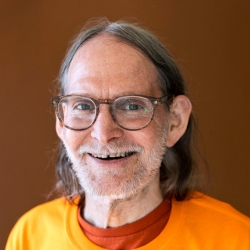Sri Krishna said:
The unreal has never existed. The real always exists.
The mysterious truth about both existence and non-existence is directly perceived by those with the eyes to see.
Sri Gurudev has recommended that we conclude all our meditations with a chant from the Isha Upanishad saying: “Asato maa sad gamaya:” “Lead us from the unreal, asat, to the real, sat.” It is prayer for viveka, the capacity to discern the Eternal Reality that is distinct from, yet immanent in, the world of changing names and forms.
The Karika Upanishad informs us of what is unreal: “That which is non-existent in the beginning and in the end, is necessarily non-existent in the intermediate stages also. The objects we see are illusory, though we regard them as real.” The example that is often given is that in the twilight a person mistakes a rope for a snake. The snake is unreal as compared to the rope, because the snake disappears upon the discovery of the rope. Since everything in this world, including our body and mind, are composed of the ever-changing gunas, according to the definition given in the Karika Upanishad, they are considered asat, not real. The Sat is Awareness or Pure Consciousness, untouched by time and space.
Sri Krishna uses the term “tattva-darshana” to indicate people who truly see things as they are. For the rest of this article, I’ll let these great beings do the talking:
Swami Venkatesananda: Life itself is a long dream. We are unable to realize the illusoriness of the external objects because the dream is still on. When it is said: “The world is unreal,” it is not suggested that we are seeing the world where nothing exists. We only mean to say that there is wrong perception: something exists (the Self or God) and we see it as something else (world). The jivamukta is aware of both—the reality and the fact that to the unenlightened the appearance is experienced as real.
Swami Krishnananda: Dream is not an unreal phenomenon; it is a real thing. You cannot ignore it as if it not there; it is there. A dream is unreal only when you wake up: when you are actually dreaming, it is not unreal. The word “dream” does not imply unreality; it only implies that it is a condition that is transcended by another condition. It does exist; and as long as it is existing in your consciousness, it is a reality for you and will have its impact on you. Anything that happens in the world is also real. But, there is another state above the worldly level, where you will find the whole world vanishes in a second, and the worldly reality is subsumed in another higher reality. The lesser real is not unreal—and yet, you must underline the word “lesser.” Everything is real, but only there are gradations of reality. The higher includes the lower: so we should not go on clinging only to the lower forever and ever, when the higher already includes it and transcends it. Transcendence does not mean negation of something. We are not rejecting some reality and then going to God.
Sri Gurudev: The permanent and the impermanent are not completely different. When we say that something changes constantly, there must be something to change. Without that something, there cannot be any changes. Then what changes? Only the names and forms of the primordial essence, which is always there. The One is always there, but it appears to be many. This basic Oneness is what’s real.
The Bhagavad Gita is a 2,500 year old Sanskrit text that offers profound insight into the deeper practices of yoga. As the seeker in the Gita metaphorically prepares for the battle of spiritual transformation, he asks his teacher a series of questions. In his answers the teacher explains the many challenges and stages of the yogic spiritual path.
The ITT course includes the study of the Bhagavad Gita, one of the world’s great scriptures. Many may not realize that the Bhagavad Gita is a manual of Yoga par excellence. The treasure revealed within the Gita expounds the philosophy and practices of the Four Main Paths of Yoga, introduced to Integral Yoga students in the Basic teacher training course. In ITT we will expand our understanding of the comprehensiveness of yoga which comprises Integral Yoga.

